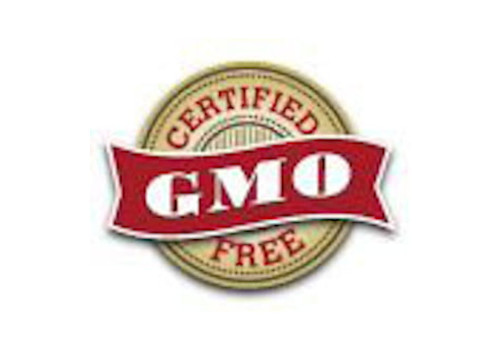Legacy Foods CEO Phil Cox Explains GMO-Free Food Storage
Recently, Phil Cox, CEO of Legacy Foods, talked about GMO-Free Food Storage, and Legacy’s practices to ensure that their products meet the rigorous criteria to be Certified GMO-Free.
You can read Legacy’s Non-GMO and Gluten Free Verification statements here:
Legacy Food’s Non-GMO and Gluten-Free Verification
GMO foods are foods that are genetically modified, also known as genetically engineered (GE) foods. Briefly, genetically modified organisms have been altered at the cellular level either by removing specific genes, or introducing new genes.
The purpose behind these alterations is to create crops that exhibit certain desirable traits, while simultaneously eliminating undesirable traits. For example, some manufacturers of GMO seeds claim that their crops require less water or are more resistant to pests or pesticides.
The broader claim among GMO seed producers is that their crops will have increased yields over normal, non-GMO seeds. That claim has yet to be definitively proven.
Many customers and competitors have asked us to verify some of the claims that are made regarding the quality of Legacy Food Storage, most frequently regarding the Non-GMO and Gluten Free claims. We are very pleased to announce that Legacy Food Storage has partnered with Honeyville Grains to continue to produce their already amazing products. Honeyville has some of the highest rated facilities in the country when it comes to quality and standards of the food products that they produce.
Please read the letter below to verify that Legacy Food Storage is completely accurate when they state their food storage products are Non-GMO and, in some cases, Gluten Free.
The Lines Have Been Drawn
The assertions of GMO food developers, manufacturers and producers have been the subject of scrutiny, skepticism, and even accusations of fraudulent reporting and skewed statistics.
To delve into the claims and counter-claims of these two camps is beyond the scope of this article. There is a tremendous amount of controversy surrounding the subject. Suffice it to say that there are companies who support GMO foods, and consumers and advocacy groups who are adamantly opposed to GMO foods. And those two camps are at war.
The debate between pro- and anti-GMO foods rages on, in the courts and on farms and in stores across the country; it is likely to continue for the foreseeable future. Meanwhile an ever-growing number of consumers have spoken and are continuing to speak. Loudly.
There are a lot of people who are demanding that all foods that come from GMO or GE sources be labeled as such. Their purpose is clear: they have no desire to eat any food that has been genetically modified, and they want to be able to see at a glance if a product on the grocery shelf contains GMOs.
What Does “GMO-Free” Mean?
For a food to be certified “GMO-Free,” the suppliers must be able to certify that their ingredients do not contain more than 0.9% GMO.
This means the supplier must prove that farmers planted non-GMO seeds, and prevented pollen or other contaminants from neighboring fields from drifting onto their fields. And that they stored and transported the crop separately from GMO crops. And that the separation between GMO and non-GMO crops was maintained throughout all phases of processing, right up to the finished product.
That is a complex, time-consuming, and costly endeavor.
Recently, General Mills spent millions of dollars to offer Cheerios as a GMO-free cereal. Keep in mind, Cheerios are oats, and at present there are no GMO oats. So it wasn’t the base ingredient that proved to be so costly to achieve a GMO-Free product.
The costs incurred by General Mills were associated with setting up new processing equipment, which had to be separate from their other equipment that processes GMO foods. And they needed to establish distinct handling and transportation facilities. Additionally, they needed to locate and source small amounts of non-GMO corn and sugar that they use to sweeten the cereal.
This proved to be a more daunting task than General Mills had originally envisioned. They persevered, however, and in the end, they claim that the time, effort and expense were well worth it.
And Post Foods is following suit. As are other companies who make a diverse mix of foods, ranging from baked goods to baby foods to frozen dinners. And even pet food.
So ultimately, we can see that the consumer does have a voice in how large companies choose to manufacture their foods. And the consumer votes with his or her wallet, so that vote definitely counts!
Legacy Foods Standards for GMO-Free Food Storage
Legacy Foods has established a series of procedures that they employ in order to assure their customers that their foods are, indeed, GMO-Free.
I. Gather Certificates
Legacy Food Storage requires each of their vendors – 43 as of this writing – to provide certificates (USDA Organic Certification, or another reputable GMO testing certification) that prove that they do not use GMO ingredients.
II. Test the Food
Gathering certificates from the suppliers is a good first step, but it alone is not sufficient. Therefore, Legacy Food Storage regularly tests all their foods for the presence of GMOs, using an independent testing service: Biogenetic Services Inc.
III. Change Ingredients / Create New Recipes
If GMOs are detected, Legacy will determine if the current suppliers offer GMO-free options, or they will find new suppliers. When Legacy creates new recipes, they work with their suppliers to create great tasting meal choices that offer the best ingredients and maintain their GMO-Free status.
IV. Maintain the Process
To ensure that all foods remain GMO-free, the testing must be done on a continuous basis. Additionally, maintaining open communication with suppliers is critical, both during the testing process as well as in the development of new product lines. Legacy Food Storage, and their suppliers, are setting a new standard for the food storage industry – GMO-Free and Non-GMO Food Storage that tastes great!


